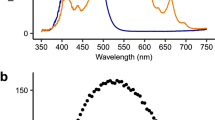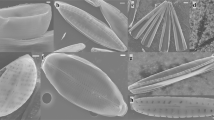Abstract
Ocean acidification (OA) adversely impacts initial shell formation of bivalve larvae. Despite many studies observing large differences in developmental success between distinct genetic populations of bivalves exposed to OA, few studies have investigated the molecular mechanisms that enable resilient larvae to build their initial shell in aragonite-undersaturated conditions. This knowledge is key to their ecological and economical conservation. Herein, we used a genetic-selection program for Crassostrea gigas to produce a resilient and susceptible larval lineage to OA. The resilient and susceptible larvae were sampled every 3 h over a 24-h period in aragonite-undersaturated and control conditions. The susceptible lineage failed to develop a larval shell in aragonite-undersaturated conditions, whereas 52% of the resilient lineage developed to D-larvae by 24 h post fertilisation. We measured the expression of 23 genes involved in initial shell formation by RT-qPCR, which revealed significant genotype-by-time and environment-by-time interactions for the transcription of these genes. Aragonite-undersaturated conditions upregulated a single gene encoding a protein involved in ion transport, Na+ K+ ATPase, in both the resilient and susceptible lineage. These results were corroborated by a second experiment involving 25 pair-mated C. gigas families exposed to aragonite-undersaturated and control conditions. Our findings indicate C. gigas have a fixed capacity to modulate expression of genes involved in initial shell formation in response to OA. Thus, phenotypic differences to OA between the resilient and susceptible lineage are likely explained by other cellular processes, such as bioenergetics or protein translation.





Similar content being viewed by others
References
Abdelhady AA (2021) Anthropogenic-induced environmental changes in the Nile-delta and their consequences on molluscan biodiversity and community structure. Ecol Indic 126:107654
Barros P, Sobral P, Range P, Chicharo L, Matias D (2013) Effects of sea-water acidification on fertilization and larval development of the oyster Crassostrea gigas. J Exp Mar Biol Ecol 440:200–206
Barton A, Hales B, Waldbusser GG, Langdon C, Feely RA (2012) The Pacific oyster, Crassostrea gigas, shows negative correlation to naturally elevated carbon dioxide levels: implications for near-term ocean acidification effects. Limnol Oceanogr 57:698–710
De Wit P, Durland E, Ventura A, Langdon CJ (2018) Gene expression correlated with delay in shell formation in larval Pacific oysters (Crassostrea gigas) exposed to experimental ocean acidification provides insights into shell formation mechanisms. BMC Genomics 19(1):160
Evans W, Pocock K, Hare A, Weekes C, Hales B, Jackson J, Feely RA (2019) Marine CO2 patterns in the Northern Salish Sea. Front Mar Sci 5:536
Feely RA, Sabine CL, Lee K, Berelson W, Kleypas J, Fabry VJ, Millero FJ (2004) Impact of anthropogenic CO2 on the CaCO3 system in the oceans. Science 305:362–366
Frieder CA, Applebaum SL, Francis Pan T-C, Hedgecock D, Manahan DT (2017) Metabolic cost of calcification in bivalve larvae under experimental ocean acidification. ICES J Mar Sci 74:941–954
Holthouser KA, Mandal A, Merchant ML, Schelling JR, Delamere NA, Valdes RR, Khundmiri SJ (2010) Ouabain stimulates Na-K-ATPase through a sodium/hydrogen exchanger-1 (NHE-1)-dependent mechanism in human kidney proximal tubule cells. Am J Physiol Renal Physiol 299:F77–F90
Huang J, Liu C, Xie L, Zhang R (2018) Amorphous calcium carbonate: a precursor phase for aragonite in shell disease of the pearl oyster. Biochem Biophys Res Commun 497:102–107
Kawaguchi T, Watabe N (1993) The organic matrices of the shell of the American oyster Crassostrea virginca Gmelin. J Exp Mar Biol Ecol 170:11–28
Leong PKK, Manahan DT (1997) Metabolic importance of Na+/K+-ATPase Activity during sea urchin development. J Exp Biol 200:2881–2892
Marin F, Le Roy N, Marie B (2012) The formation and mineralization of mollusk shell. Front Biosci 4:1099–1125
McDougall C, Degnan BM (2018) The evolution of mollusc shells. WIREs Dev Biol 7:e313
Nordio D, Khtikian N, Andrews S, Bertotto D, Leask K, Green T (2020) Adaption potential of Crassostrea gigas to ocean acidification and disease caused by Vibrio harveyi. ICES J Mar Sci 1–8
Nudelman F (2015) Nacre biomineralisation: a review on the mechanisms of crystal nucleation. Semin Cell Dev Biol 46:2–10
Pan FT-C, Applebaum SL, Manahan DT (2015) Genetically determined variation in development physiology of bivalve larvae (Crassostrea gigas). Physiol Biochem Zool 88:128–136
Pan FT-C, Applebaum SL, Lentz BA, Manahan DT (2016) Predicting phenotypic variation in growth and metabolism of marine invertebrate larvae. J Exp Mar Biol Ecol 483:64–73
Pan TC, Applebaum SL, Frieder CA, Manahan DT (2018) Biochemical bases of growth variation during development: a study of protein turnover in pedigreed faamilies of bivalve larvae (Crassostrea gigas). J Exp Biol 221:jeb171967
Parker LM, Ross PM, O’connor WA (2009) The effect of ocean acidification and temperature on the fertilization and embryonic development of the Sydney rock oyster Saccostrea glomerata (Gould 1850). Glob Change Biol 15:2123–2136
Pierrot DE, Lewis E, Wallace DWR (2006) MS Excel program developed for CO2 system calculations. ORLN/CDIAC-105, Carbon dioxide Information Analysis Center, Oak Ridge National Laboratory, U.S. Department of Energy. Oak Ridge, TN.
Ramesh K, Hu MY, Melzner F, Bleich M, Himmerkus N (2020) Intracellular pH regulation in mantle epithelial cells of the Pacific oyster. Crassostrea Gigas J Comp Physiol B 190:691–700
Ramesh K, Hu MY, Thomsen J, Bleich M, Melzner F (2017) Mussel larvae modify calcifying fluid carbonate chemistry to promote calcification. Nat Commun 8:1709
Ramesh K, Melzner F, Griffith AW, Gobler CJ, Rouger C, Tasdemir D, Nehrke G (2018) In vivo characterization of bivalve larval shells: a confocal Raman microscopy study. J R Soc Interface 15:20170723
Ramesh K, Yarra T, Clark MS, John W, Melzner F (2019) Expression of calcification-related ion transporters during blue mussel larval development. Ecol Evol 9:7157–7172.
Subasinghe R, Soto D, Jia J (2009) Global aquaculture and its role in sustainable development. Rev Aquacult 1:2–9
Thomsen J, Haynert K, Wegner KM, Melzner F (2015) Impact of seawater carbonate chemistry on the calcification of marine bivalves. Biogeosciences 12:4209–4220
Timmins-Schiffman E, O’Donnell MJ, Friedman CS, Roberts SB (2013) Elevated pCO2 causes developmental delay in early larval Pacific oysters, Crassostrea gigas. Mar Biol 160:1973–1982
Troost K (2020) Causes and effects of a highly successful marine invasion: case-study of the introduced Pacific oyster Crassostrea gigas in continental NW European estuaries. J Sea Res 64:145–165
Ventura A, Schulz S, Dupont S (2016) Maintained larval growth in mussel larvae exposed to acidified under-saturated seawater. Sci Rep 6:23728.
Waldbusser GG, Hales B, Langdon CJ, Haley BA, Schrader P, Brunner EL, Gimenez I (2015) Saturation-state sensitivity of marine bivalve larvae to ocean acidification. Nat Clim Change 5:273–280
Watson S-A, Southgate PC, Tyler PA, Peck LS (2009) Early larval development of the Sydney rock oyster Saccostrea glomerata under near-future predictions of CO2-driven ocean acidification. J Shellfish Res 28:431–437
Wright SH, Manahan DT (1989) Integumental nutrient uptake by aquatic organisms. Annu Rev Physiol 51:585–600
Zhao R, Takeuchi T, Luo YJ, Ishikawa A, Kobayashi T, Koyanagi R, Villar-Briones A, Yamada L, Sawada H, Iwanaga S, Nagai K (2018) Dual gene repertoires for larval and adult shells reveal molecules essential for molluscan shell formation. Mol Biol Evol 35:2751–2761
Acknowledgements
The authors acknowledge the BC Shellfish Industry for donation of broodstock oysters. The authors are grateful to D. Roth, M. Lebeuf, S. Leduc and D. Moody for assistance with larval rearing.
Funding
Funding was provided to T. Green from Canada Research Chair Program (CRC, #950–231856), Natural Sciences and Engineering Research Council (NSERC, #2018–06761). Funding was provided to C. Mackenzie from Fisheries and Oceans Canada Aquaculture Collaborative Research and Development Program. Funding to M. Wright-LaGreca came from the NSERC Undergraduate Student Research Award Program and MITACS Research Training Award.
Author information
Authors and Affiliations
Contributions
T. G. and C. M. designed the study. All the authors contributed to larval experiments. C. M. conducted seawater analysis. M. W.-L. conducted RNA extractions, RT-qPCR and statistical analysis. M. W.-L. and T. G. wrote the manuscript. All the authors contributed to paper revisions.
Corresponding author
Ethics declarations
Conflict of Interest
The authors declare no competing interests.
Additional information
Publisher's Note
Springer Nature remains neutral with regard to jurisdictional claims in published maps and institutional affiliations.
Rights and permissions
About this article
Cite this article
Wright-LaGreca, M., Mackenzie, C. & Green, T.J. Ocean Acidification Alters Developmental Timing and Gene Expression of Ion Transport Proteins During Larval Development in Resilient and Susceptible Lineages of the Pacific Oyster (Crassostrea gigas). Mar Biotechnol 24, 116–124 (2022). https://doi.org/10.1007/s10126-022-10090-7
Received:
Accepted:
Published:
Issue Date:
DOI: https://doi.org/10.1007/s10126-022-10090-7




